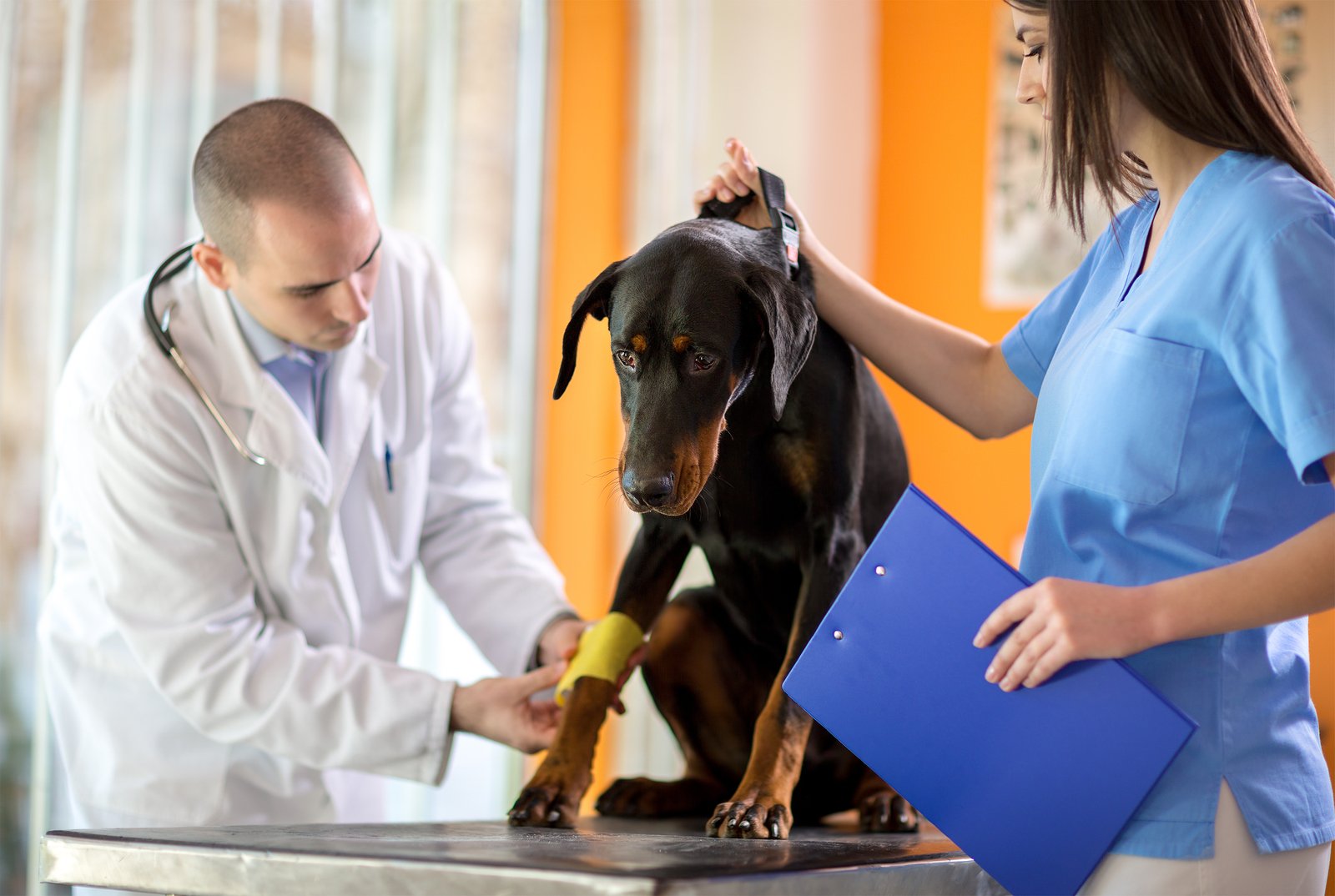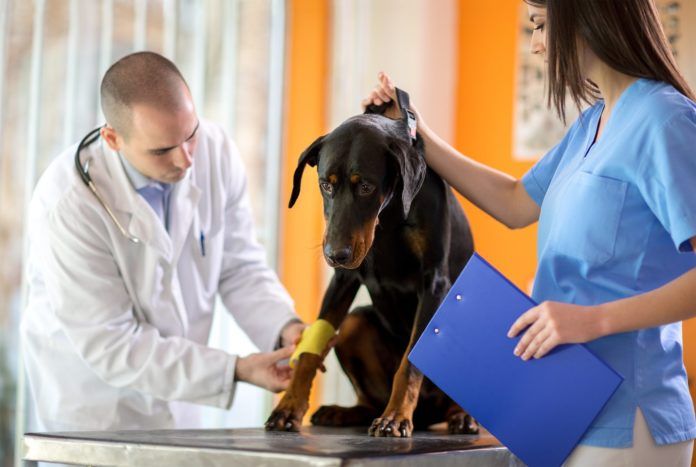When it comes to letting you know about pain, “dogs are a piece of cake compared to cats,” says Alicia Karas, DVM, Director of the Pain Consultation & Referral Service at Tufts Cummings School of Veterinary Medicine. Cats are secretive by nature, she says, and will not disclose everything from “I just dragged in a mouse from the street and am going to hoard it” to “I’m dying of kidney disease.” They’ll just sit there licking their paws.
Fortunately for dog lovers, dogs give more signs. “Dogs in significant pain often tend to become clingy,” Dr. Karas says. ” A dog in a lot of pain also “may not be able to settle down. He’ll be restless and change positions frequently.” He might whine or whimper, too, or let you know with a telltale limp that something’s amiss.
A diminishment in quality of life is yet another sign. If a dog stops doing what he likes to do, whether that’s playing fetch, taking treats from you when he ordinarily lives for them, getting excited when you reach for the leash, or barking as the mailman comes to the door, something is most definitely wrong.
BIGSTOCK


Clearly, in such cases, you want to get your pet to the doctor to find the root cause of the problem and treat it. But no matter what is wrong, there are lifestyle steps you can take at home on your own to minimize your dog’s pain or discomfort.
1. As long as your veterinarian okays it, make sure your pet gets regular exercise. Physical activity releases endogenous opioids, meaning opioids that originate from within the body. It also brings circulation to tissues, Dr. Karas says, and strengthens muscles that support joints.
2. Make sure you do not turn your dog into a weekend warrior. Just like we are, “our dogs are a nation of couch potatoes,” Dr. Karas says. A lot of people get their dogs out into a field to play fetch or go on a really long walk during the weekend, then leave the dog lying around over the course of the work week. That doesn’t allow muscles and joints to become acclimated to vigorous physical activity, and they end up strained, causing pain. Better to go for consistent activities most days of the week that build up muscle slowly rather than introduce rigorous exercise once or twice every seven days. Moderate daily exercise is particularly important if your dog suffers from arthritis.


3. Don’t walk your dog on hot concrete during the hottest part of the day in the middle of summer. A dog’s foot pads can only take so much. Likewise, put boots on a weak or arthritic dog when there’s snow and ice outside. And take it slowly. Trudging through deep snow and slipping on ice are common sources of painful injury for dogs.
4.Keep your dog trim — or slim him down. Excess weight exacerbates the pressure on joints. Consider that in people, just a 5 percent reduction in body weight can lead to a 50 percent reduction in back pain. Furthermore, adipose tissue, that is, fat tissue, can contribute to inflammation, which is an issue with many diseases, including arthritis.
5. Stay calm. “There’s no question that dogs feed off their owners’ emotions,” Dr. Karas says. If an owner is not relaxed, the dog cannot relax, either. That causes his body to tense up and will ratchet up any pain he is feeling. “I see this all the time,” Dr. Karas comments. “An owner brings in her dog, terribly anxious over the dog’s pain, and the dog, reflecting his owner’s mood, is a wreck. But when I talk to the owner, tell her there are things we can do for her pet, her breathing becomes more regular and her posture relaxes, and her dog begins to relax, too.”
6. Trim your dog’s toenails regularly, and trim the fur from the bottom of his feet. This becomes particularly important for older dogs, who may have balance issues or arthritis. These steps will provide more traction for the dog as he walks, making it less likely that he will slip and fall and hurt himself in the process.
7. Consider buying a Zoom-Groom, a soft rubber massage tool that stimulates the skin and muscles over areas in pain and thereby triggers the release of endorphins. Many dogs love it — as long as you keep the pressure at a point that they can tolerate comfortably. A little trial and error will help you figure it out.
8. For a dog who has difficulty getting from a resting to a standing position, buy a harness with handles to help him rise. It eases pain and stiffness — and can also be used to help a dog climb stairs. “You can’t imagine how many owners tell me they’ve started sleeping downstairs with their dogs because the dog can no longer manage the stairs,” Dr. Karas reports.
9. If your dog must stay in the hospital for more than a few days, either to recover from an illness or surgery, go to see him every single day. Owner visits used to be discouraged by veterinarians because of the belief that owners would just get in the way, and dogs who are going to be in the hospital for three days or fewer can handle waiting. But now, for longer stays, Tufts encourages owners to come. A dog who’s barking or whining after surgery will often fall asleep once his owner comes and sits beside him.
10. Don’t feel funny about telling your veterinarian if your think your dog is in pain. Granted, veterinary pain specialists are not yet available in every area of the country. But there are many other specialists, ranging from neurologists to orthopedists to oncologists, who are now using their own experience and their professional networks to offer advanced pain relief. We’ve come a long way from the days that dogs didn’t get pain medication even when they were spayed or neutered.





